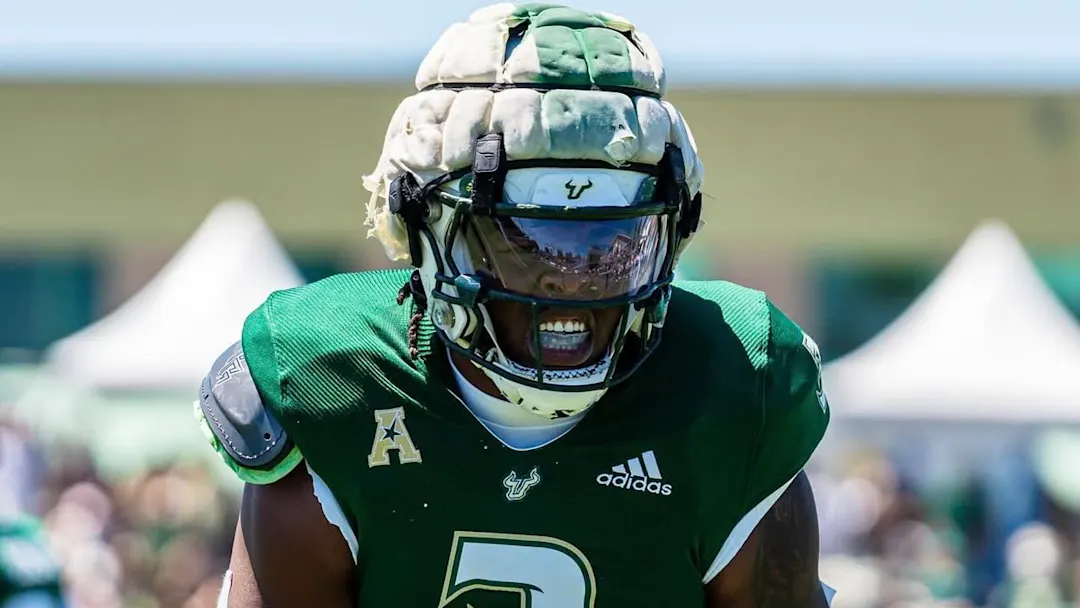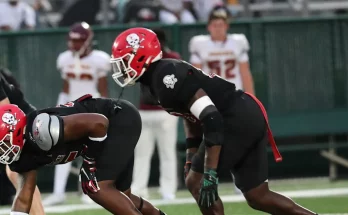The LSU Tigers have made another emphatic statement on the recruiting trail—not through high school commitments this time, but in the transfer portal, where Brian Kelly and his staff continue to show why they’re among the most aggressive and strategic programs in the nation. As the college football offseason progresses and rosters across the SEC shift and retool, LSU has landed not just one, but two standout newcomers who are expected to make an immediate impact in Baton Rouge.
In a year when the Tigers are looking to reload, not rebuild, the addition of these two transfer standouts is a critical development. It’s not just about plugging roster holes—it’s about strengthening positions of need and injecting proven talent into a team hungry to reassert itself atop the conference. These additions signal LSU’s determination to remain nationally relevant in a rapidly evolving college football landscape.
First is the acquisition of a hard-hitting safety from the Big Ten who brings both physicality and veteran presence to the LSU secondary. After three strong seasons at his previous school, this player entered the portal seeking a new challenge—something bigger, with more exposure and a chance to compete at the highest level. LSU checked every box. He brings with him not only production—over 150 career tackles, six interceptions, and a reputation as a sure tackler—but also leadership and intelligence on the back end of the defense. In his first media appearance after announcing his commitment to LSU, he spoke with calm confidence about his decision, saying, “LSU has that championship mentality. I want to be a part of something great and bring my experience to a team that’s ready to win now.”
This addition couldn’t come at a better time for the Tigers, who faced major question marks in the secondary following several departures, including a couple of early NFL Draft entrants and the expiration of key players’ eligibility. The new safety figures to start immediately and stabilize a unit that struggled at times last season with consistency and communication. While the talent was there, the cohesion wasn’t always. This new leader could be the piece that ties it all together.
The second newcomer is a game-breaking wide receiver from the Pac-12, known for his deep-threat ability and crisp route running. At 6-foot-1, with blazing speed and exceptional hands, he was one of the most coveted wideouts in the portal. LSU’s coaching staff made him a priority the moment he declared his intent to transfer, and for good reason. Over the past two seasons, he racked up over 1,700 yards receiving and 14 touchdowns, often drawing double teams and still producing explosive plays. Despite playing on a team that went through coaching turnover and offensive inconsistencies, he remained a bright spot and a go-to weapon.
What makes his commitment to LSU even more impactful is how it addresses a glaring need. With the departure of star wide receivers to the NFL and graduation, the Tigers were in search of a player who could stretch the field, create mismatches, and provide a reliable target for whoever wins the quarterback battle this fall. This receiver does all that and more. His ability to take the top off defenses and command attention will not only open up the offense but also create opportunities for LSU’s deep stable of young receivers and tight ends.
During his official visit to Baton Rouge, he reportedly bonded quickly with players and coaches alike. Several LSU players took to social media to express their excitement, and one current offensive leader noted that “he’s the kind of guy who changes games. We’re getting a dude.” His transition to LSU’s offensive system is expected to be seamless, given the similarities in schemes and his high football IQ.
These two portal pickups represent more than just athletic upgrades—they highlight LSU’s evolving recruiting philosophy under Brian Kelly. In the NIL era, relationships, culture, and competitive opportunity weigh just as heavily as tradition and facilities. LSU has embraced this dynamic, building a program infrastructure that appeals to both elite high school recruits and college players seeking a fresh start. Kelly has emphasized the importance of bringing in not only elite talent but also individuals who fit the program’s goals and values. “We want guys who are serious about football, serious about winning, and serious about being great teammates,” he said in a recent interview.
It’s clear that LSU is operating with a sense of urgency. After a promising 2023 season that ended with a few tough breaks and near-misses, the Tigers are loading up for a run in 2025. The SEC will look slightly different with the addition of Texas and Oklahoma, making the path to the playoff even more competitive. LSU’s staff knows it can’t rely solely on incoming freshmen to carry the load—it needs battle-tested players who can contribute from Day One. That’s exactly what these transfers provide.
There’s also the broader strategic advantage LSU gains from these moves. In a conference known for its brutal physicality and depth, every edge matters. Adding an experienced safety who has faced top-tier quarterbacks and offensive systems—and thrived—isn’t just a luxury, it’s a necessity. Likewise, bringing in a proven wide receiver who can immediately be WR1 gives the Tigers flexibility and firepower in an offense that’s known for lighting up the scoreboard.
The ripple effects of these acquisitions extend beyond the field. Their commitments boost LSU’s recruiting momentum, send a message to other portal targets, and demonstrate that the program is a premier destination for elite talent looking to make an impact on a big stage. For high school recruits watching from afar, it’s proof that LSU is serious about surrounding its players with winners and building a culture that’s both competitive and cohesive.
Early reports from spring practice suggest both transfers have already made strong impressions. The safety reportedly took on a vocal leadership role in early walkthroughs, organizing the secondary and offering guidance to younger players. Coaches have praised his film study habits and attention to detail. Meanwhile, the wide receiver has dazzled with his quickness and ability to separate during one-on-one drills. Quarterbacks have quickly grown comfortable throwing his way, and insiders say it’s only a matter of time before he becomes a household name in the SEC.
Of course, challenges remain. Chemistry doesn’t form overnight, and LSU will need to integrate these players while continuing to develop its younger talent. But the early signs are promising, and there’s a sense within the program that these transfers bring the right attitude and approach to fit seamlessly into the locker room. That’s no accident—Kelly and his staff have made character evaluation a key part of their portal strategy. In today’s college football world, it’s not enough to just stack stars. You need culture carriers.
With these two additions, LSU now has one of the most well-rounded transfer classes in the country. They addressed needs, added veteran leadership, and upgraded talent. It’s a win on every level. And it’s a sign of what’s to come from a program that continues to evolve without losing sight of its championship DNA.
As the countdown to fall continues, the spotlight will only grow brighter in Baton Rouge. Expectations are sky-high, and with these latest acquisitions, the Tigers are signaling they’re not just aiming for improvement—they’re gunning for dominance. Every rep, every practice, every decision between now and Week 1 will be shaped by that goal. And thanks to a pair of game-changing newcomers, LSU just got a whole lot closer to achieving it.



